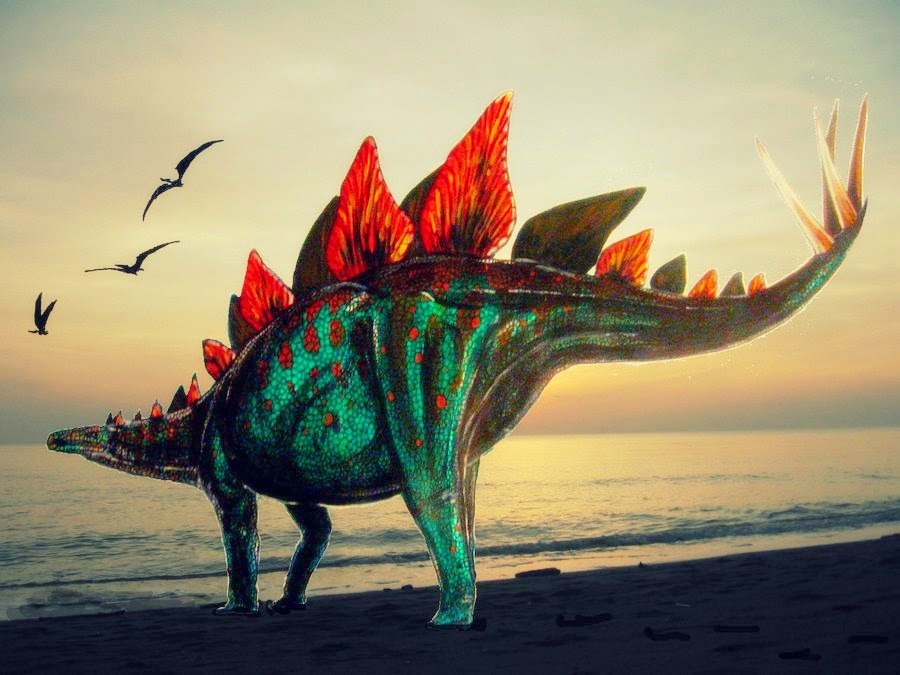Classification: Dinosauria-Ornithischia-Thyreophora-Stegosauria-Stegosauridae-Stegosaurinae
Time Period: late Jurassic
Location: North America & Europe
Diet: Herbivore
The "roofed lizard" is one of the most famous dinosaurs, ranking in popular lore alongside Tyrannosaurus and Triceratops (though Stegosaurus would've never met any of the other two; they were separated by millions of years). Stegosaurus weighed more than two tons and foraged on low-lying plants. Because its diet would've been composed of ground-hugging foilage, it wouldn't had to compete against the titanic sauropods that shared the land during the late Jurassic. Stegosaurus had a small head with weak jaws, and a beak at the front of the mouth chopped vegetation. Inside the mouth, dozens of leaf-shaped teeth ground the vegetation prior to digestation. The front legs were only half as long as its hind legs, but they were stout and able to carry the weight of the dinosaur's "upper-body"; the disproportion between the front and hind legs gave Stegosaurus a steep arch down towards the head, making the hips the tallest part of its body.
While Tyrannosaurus is known for its scrawny arms and killer teeth, and while Triceratops is known for its three horns and bony frill, Stegosaurus has gathered renown because of the two rows of staggered bony plates running along its back. These plates started off smaller at the head, were biggest at the hips, and then decreased towards the tail. These plates measured several inches thick at the base but became thin and narrow at the tips. These knobs and plates in the skin helped to strengthen and protect the dinosaur's flanks and hips. Some reconstructions even show the plates pointing downward from the back, covering its sides as a sort of roofed protection; these artists speculate that the plates were misaligned at burial. Four ghastly spikes protruded from its tail, and it probably used these as deterrents against the larger predators of the late Jurassic (such as Allosaurus and Ceratosaurus; remember, T-Rex wasn't around!). Here's a famous painting of a Stegosaurus fleeing from a pursuing Allosaurus:
 |
| you know he's gonna get it |
Endocasts of Stegosaurus' skull show that it had a small brain. This doesn't rule out intelligence, but it certainly doesn't argue for it. In the past, scientists believed that because Stegosaurus had such a tiny brain (about the size of a dog), it must've been a dumb, lumbering animal; this, in turn, led to the widespread belief that all dinosaurs were dumb brutes. Nowadays such a belief is a paleontological anathema (though we can probably assume that Stegosaurus' intelligence is just what would've been needed for a slow-moving, ground-hugging, armored eater). In the burgeoning days of dinosaur discoveries, paleontologists sought to compensate for its small brain by postulating a second brain in its hip region; they based this off the evidence left behind by the sacral plexus, which was a bundle of fleshy nerves that helped with the function of the spinal cord. Regardless of its intelligence, it's still a wicked cool dinosaur, and it could fuck you up.
 |
| you could downright impale yourself on those spikes |

No comments:
Post a Comment